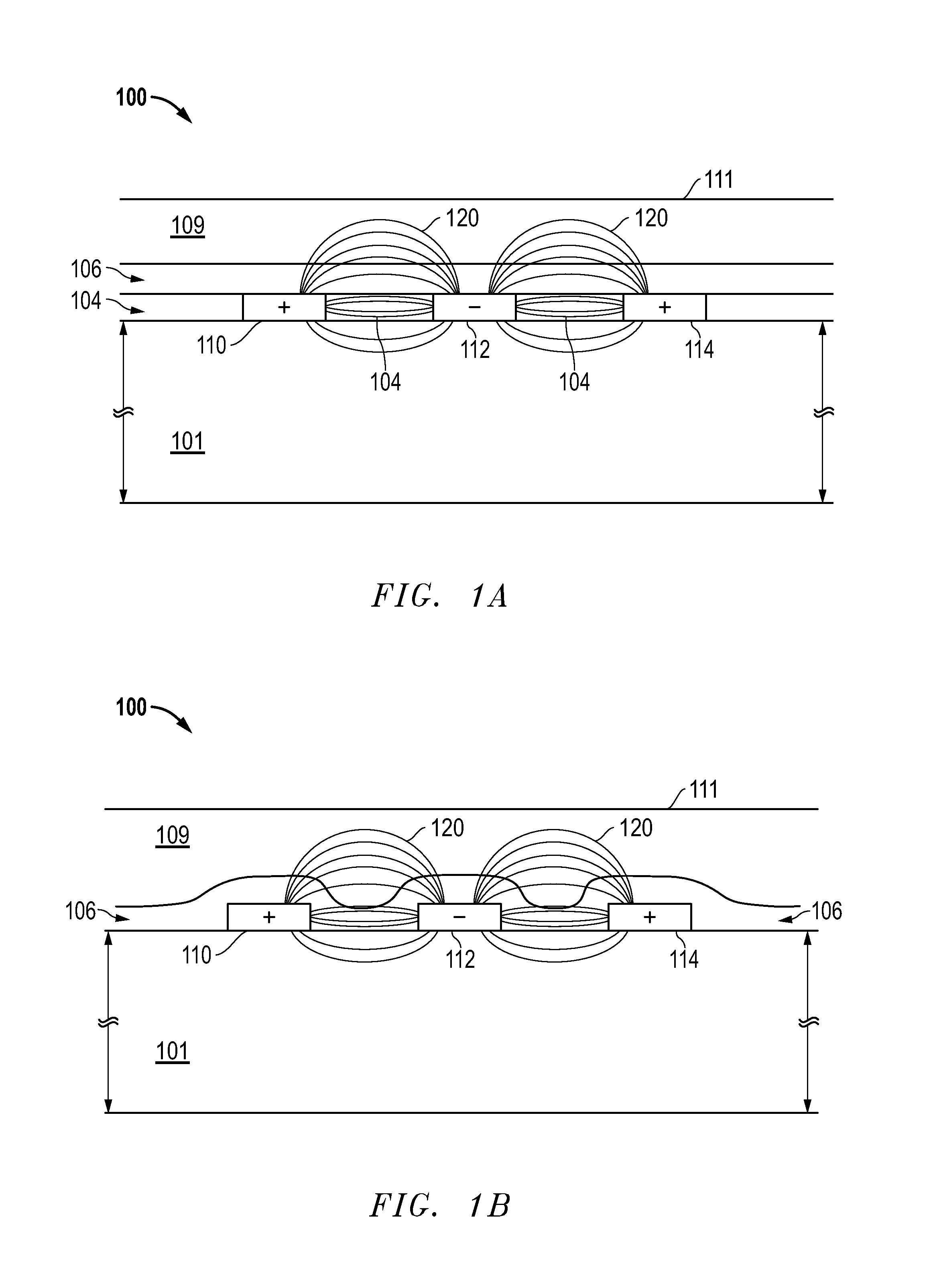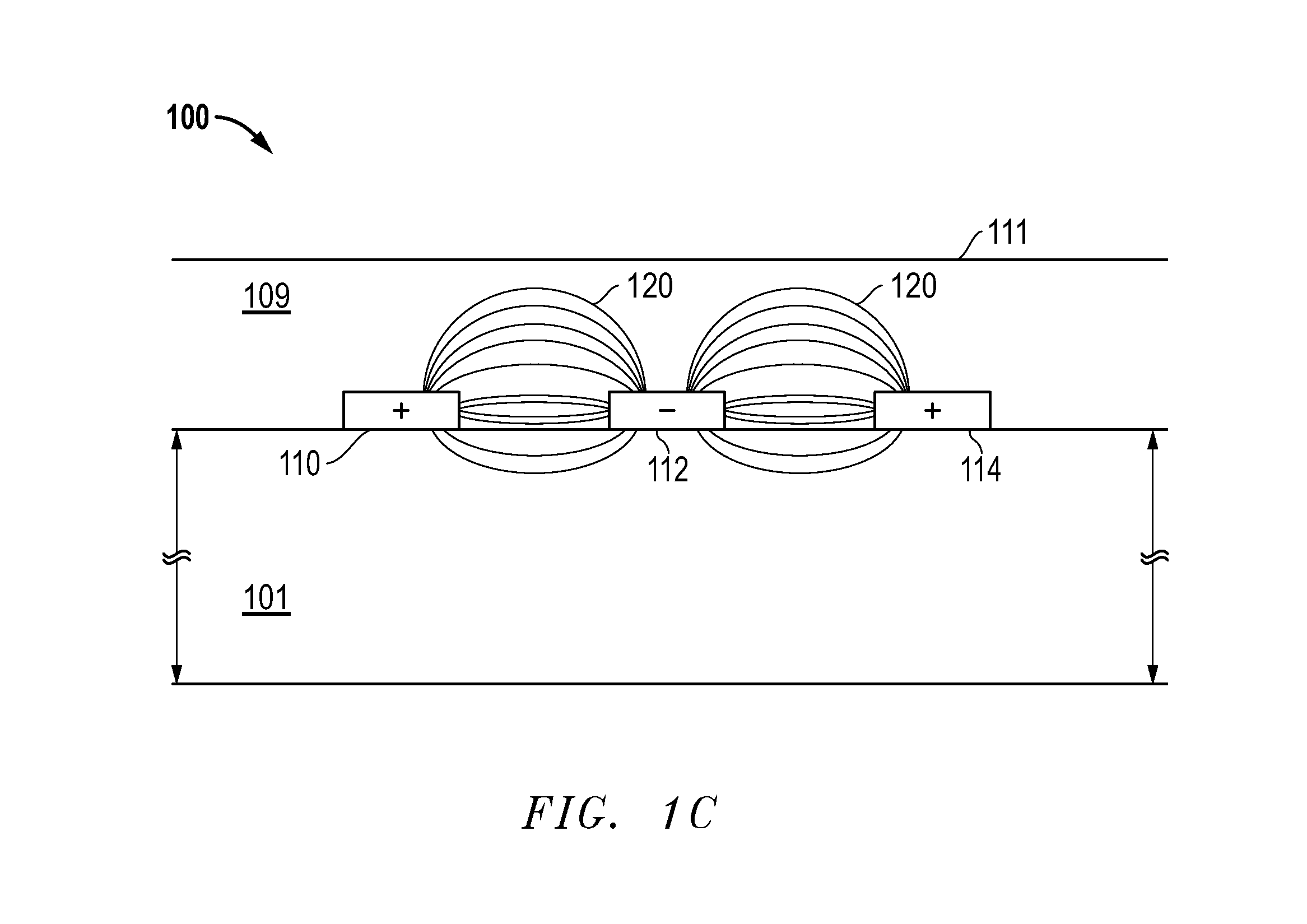Sensor for measuring high humidity conditions and/or condensation
a technology of humidity sensor and sensor, which is applied in the field of humidity sensor, can solve problems such as visibility problems, corrosion of metallic surfaces, and condensation such as the formation of “fogging” or actual water droplets on the surfa
- Summary
- Abstract
- Description
- Claims
- Application Information
AI Technical Summary
Benefits of technology
Problems solved by technology
Method used
Image
Examples
Embodiment Construction
[0016]Rather than limiting use to lower RH ranges, the humidity and / or condensation sensor disclosed herein purposefully utilizes high RH condition measurements, even including condensation conditions. In one embodiment, the sensor may be a capacitive humidity sensor. FIGS. 1A-1C provide illustrative embodiments of a capacitive humidity sensor, though it will be recognized that many other capacitive humidity sensor structure arrangements may be utilized with the techniques disclosed herein. As shown in the FIG. 1A cross-section, sensor electrodes 110, 112 and 114 may be formed on a substrate 101 to form “fingers” of an interdigitated capacitive structure. It will be recognized that the capacitive structure may be formed by many electrodes arranged as shown in FIG. 1A. Capacitance measurements obtained between the electrodes may be utilized to determine humidity levels. Sensor electrodes may be any of a wide variety of conductive materials. Substrate 101 may be any of a wide variety ...
PUM
 Login to View More
Login to View More Abstract
Description
Claims
Application Information
 Login to View More
Login to View More - R&D
- Intellectual Property
- Life Sciences
- Materials
- Tech Scout
- Unparalleled Data Quality
- Higher Quality Content
- 60% Fewer Hallucinations
Browse by: Latest US Patents, China's latest patents, Technical Efficacy Thesaurus, Application Domain, Technology Topic, Popular Technical Reports.
© 2025 PatSnap. All rights reserved.Legal|Privacy policy|Modern Slavery Act Transparency Statement|Sitemap|About US| Contact US: help@patsnap.com



